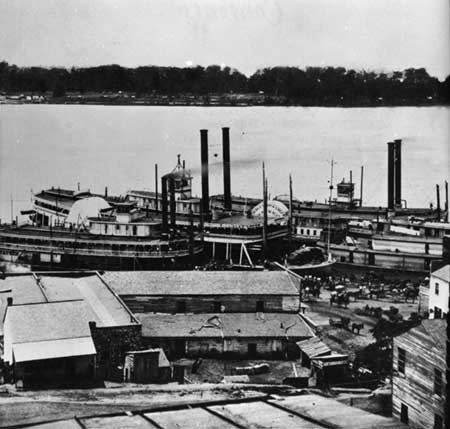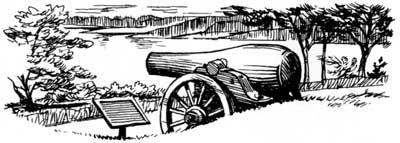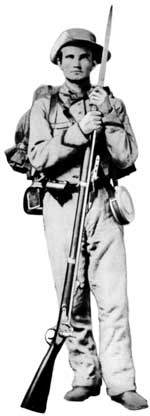|
VICKSBURG National Military Park |
 |

Merchant steamers unloading supplies at Vicksburg after the
surrender.
Courtesy Library of Congress.
ACROSS THE IMPERISHABLE CANVAS of the American Civil War are vividly recorded feats of arms and armies, and acts of courage and steadfast devotion which have since become a treasured heritage for all Americans. Among the military campaigns, few, if any, present action over so vast an area, of such singular diversity, and so consequential to the outcome of the war, as the great struggle for control of the Mississippi River. Seagoing men-of-war and ironclad gunboats engaged shore defenses and escorted troops along river and bayou; cavalry raids struck far behind enemy lines as the armies of the West marched and countermarched in a gigantic operation which culminated in the campaign and siege of Vicksburg. Protected by heavy artillery batteries on the riverfront and with land approaches to the north and south guarded by densely wooded swamplands, Vicksburg defied large-scale land and river expeditions for over a year. Finally the tenacious Grant, in a campaign since accepted as a model of bold strategy and skillful execution, forced the surrender of Vicksburg on July 4, 1863, splitting the Confederacy in two and securing for the North its great objective in the Western Theater.

VICKSBURG AND THE MISSISSIPPI. Control of the Mississippi River, whose course meandered over 1,000 miles from Cairo, Ill., to the Gulf of Mexico and divided the Confederacy into almost equal parts, was of inestimable importance to the Union from the outbreak of hostilities. The agricultural and industrial products of the Northwest, denied their natural outlet to markets down the great commercial artery to New Orleans, would be afforded uninterrupted passage. It would provide a safe avenue for the transportation of troops and their supplies through a tremendous area ill-provided with roads and railroads; the numerous navigable streams tributary to the Mississippi would offer ready routes of invasion into the heart of the South. Union control would cut off and isolate the section of the Confederacy lying west of the river—Texas, Arkansas, and most of Louisiana—comprising almost half of the land area of the Confederacy and an important source of food, military supplies, and recruits for the Southern armies. Forcefully emphasizing the strategic value of the Mississippi was the dispatch of the General in Chief of the Union armies to Maj. Gen. U. S. Grant on March 20, 1863, as Grant prepared to launch his Vicksburg campaign:
|
|
To protect this vital lifeline, the Confederacy had erected a series of fortifications at readily defensible locations along the river from which the Union advance could be checked. Pushing southward from Illinois by land and water, and northward from the Gulf of Mexico by river, Union army and naval units attacked the Confederate strongpoints from both ends of the line. They captured post by post and city by city until, after the first year of the war, Vicksburg alone barred complete Union possession of the Mississippi River. From the city ran the only railroad west of the river between Memphis and New Orleans. Through the city most of the supplies from the trans-Mississippi were shipped to Confederate armies in the East. The city's batteries on the bluffs, commanding a 5-mile stretch of the river, effectively prevented Union control of the Mississippi. Vicksburg was indeed the key, declared Lincoln, and the war could not be brought to a successful conclusion "until that key is in our pocket." |

|

| History | Links to the Past | National Park Service | Search | Contact |
|
Last Modified: Mon, Dec 2 2002 10:00:00 am PDT |


